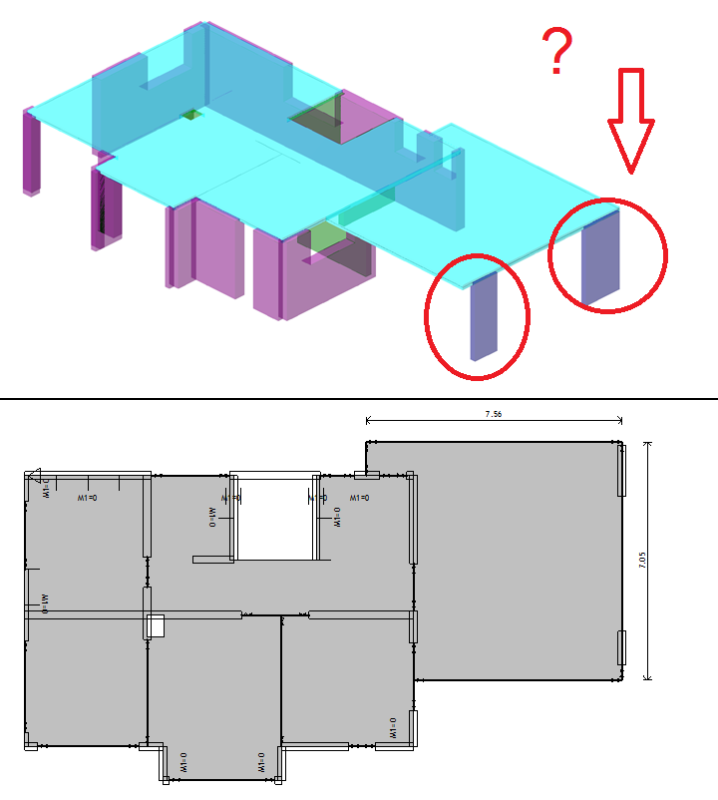mats12
Geotechnical
- Dec 17, 2016
- 181
Hello, I have a question regarding modeling a concrete slab.
If a concrete slab is laying on top of masonry walls - that is pinned connection, right?
But what about when there is a concrete wall instead of masonry? Should I select fixed connection between wall and slab or not? If there is fixed connection that means that the moment also appears in the concrete walls. What if i dont want that. Maybe it depends how i detail reinforcement between slab - wall?
There is an example beloq... im not sure how to model it properly.

suggestions?
tnx
If a concrete slab is laying on top of masonry walls - that is pinned connection, right?
But what about when there is a concrete wall instead of masonry? Should I select fixed connection between wall and slab or not? If there is fixed connection that means that the moment also appears in the concrete walls. What if i dont want that. Maybe it depends how i detail reinforcement between slab - wall?
There is an example beloq... im not sure how to model it properly.

suggestions?
tnx
